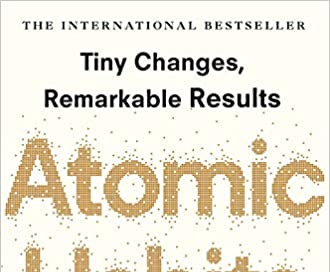The First Law of Behavior Change
In this post I pull out some insights from the early section of Atomic Habits summary that I’m reading. I make some general comments, but for the mst part let the passages speak for themselves.
I’ll be implementing certain aspects of Atomic Habits. Updates on those will be in my Monday posts.
True behaviour change is identity change. You might start a habit because of motivation, but the only reason you’ll stick with one is that it becomes part of your identity.
The goal is not to read a book, the goal is to become a reader.
The goal is not to run a marathon, the goal is to become a runner.
The goal is not to learn an instrument, the goal is to become a musician.
Know what result you want, work backward to find what type of person could get those results.
There are two key points in the quote above that stick out:
Identity
End Results
I need to become the person that does these habits. It isn’t about creating chores for yourself. I need to see myself as the type of person who completes the good habits that I want. To do this I must know who I want to be. I need a clear vision of where I’m going.
4 Laws of Behavior Change
Cue: Make it obvious
Craving: Make it attractive
Response: Make it easy
Reward: Make it satisfying
How can we make it obvious?
Habit Scorecard
The process of behaviour change always starts with awareness. You need to be aware of your habits before you can change them
List all daily habits and score them as good, bad, or neutral. Does this habit help me become the type of person I wish to be? Does this habit cast a vote for or against my desired identity?
Habit Stacks
Create a habit using the habit stacking formula: “After CURRENT HABIT, I will NEW HABIT” Some examples…
Meditation. After I pour my cup of coffee each morning, I will meditate for one minute.
Exercise. After I take off my work shoes, I will immediately change into my workout clothes.
Gratitude. After I sit down to dinner, I will say one thing I’m grateful for that happened today.
Environment
Design your environment such that cues of preferred habits are obvious. “When the cues that spark a habit are subtle or hidden, they are easy to ignore.”
If you want to remember to take your medication each night, put your pill bottle directly next to the faucet on the bathroom counter.
If you want to practice guitar more frequently, place your guitar stand in the middle of the living room.
If you want to drink more water, fill up a few water bottles each morning and place them in common locations around the house.
Drive the point home further
Create a separate space for work, study, exercise, entertainment, and cooking. It is easier to build new habits in a new environment because you are not fighting against old cues
Perseverance, grit, and willpower are essential to success, but the way to improve these qualities is not by wishing you were a more disciplined person, but by creating a more disciplined environment.
People with high self-control tend to spend less time in tempting situations. It’s easier to avoid temptation than resist it.
General advice
If you can’t seem to get any work done, leave your phone in another room for a few hours.
If you’re continually feeling like you’re not enough, stop following social media accounts that trigger jealousy and envy.
If you’re playing too many video games, unplug the console and put it in a closet after each use.
I’ve got some work to do this week. Habit scorecard and thinking about my destination. What habits can I stack together? Which habits would my future self (the one I’m working toward) have stacked?



